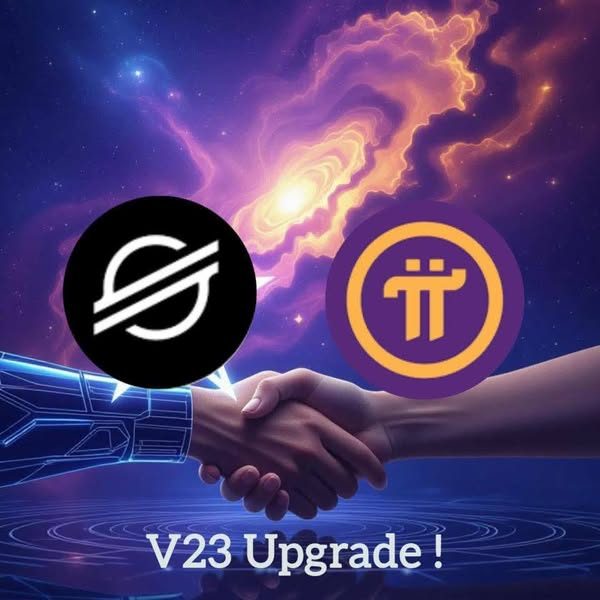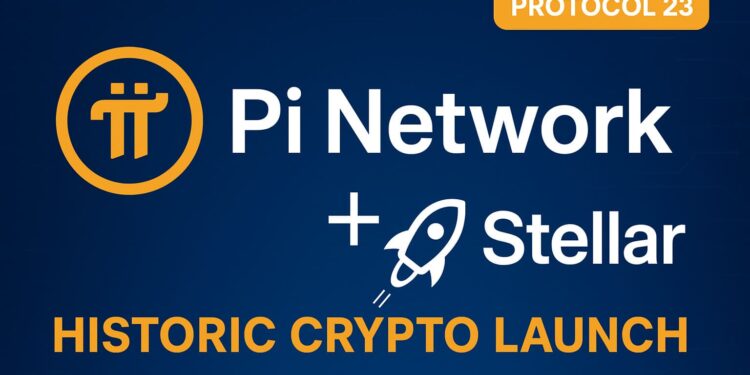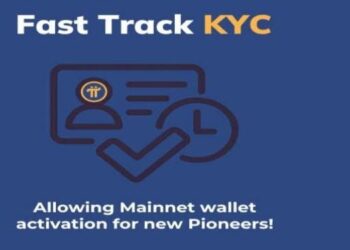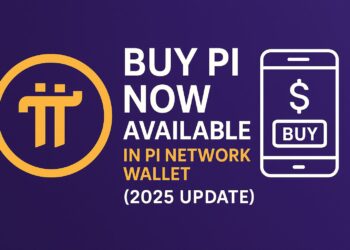On September 3rd, Pi Network marked a historic milestone with the launch of Stellar Protocol 23, setting off a chain of events that could reshape the global cryptocurrency ecosystem. This event represents a major leap for Pi Network, combining cutting-edge blockchain technology, mobile mining, and a massive community of users to propel Pi into the next generation of digital currency.
In this article, we explore the technical upgrades, economic potential, ecosystem advantages, and future outlook for Pi Network with Protocol 23, offering a comprehensive guide for crypto enthusiasts, investors, and Web3 adopters.
What is Pi Network?
Pi Network is a community-driven cryptocurrency project designed to make crypto mining accessible via mobile devices. Unlike traditional cryptocurrencies like Bitcoin or Ethereum, which require expensive hardware, Pi allows users to mine Pi coins on their smartphones with minimal energy consumption.
Key features of Pi Network include:
- Mobile Mining: Anyone can mine Pi using a smartphone app without draining resources.
- Community Focus: Pi emphasizes user participation, aiming to create a large, engaged global community of “Pioneers.”
- Scalability: With millions of active users, Pi is designed to handle mass adoption and transaction volume.
With the integration of Stellar Protocol 23, Pi is set to unlock new layers of functionality, speed, and global interoperability.

Stellar Protocol 23: What It Brings to Pi Network
Stellar Protocol 23 is a major update to the Stellar Consensus Protocol (SCP) that Pi Network leverages. The update enhances speed, scalability, and smart contract capabilities, allowing Pi to compete with leading blockchains like Ethereum, Solana, and others.
Key improvements include:
1. Ultra-Fast Transaction Speed
Protocol 23 boosts Pi Network’s ability to process millions of transactions per second, enabling seamless scalability for hundreds of millions of users. This is a crucial step for Pi to become a globally adopted cryptocurrency.
2. Smart Contracts via Soroban
With the introduction of Soroban smart contracts, Pi Network can now support Decentralized Finance (DeFi), Non-Fungible Tokens (NFTs), and dApps within its ecosystem. This opens up vast opportunities for developers, entrepreneurs, and creators to build applications on Pi.
3. ISO 20022 Compliance
Protocol 23 brings Pi Network in line with ISO 20022 global financial standards, enabling direct integration with traditional banking systems. This paves the way for Pi to function as a bridging currency for global finance, connecting blockchain users and financial institutions.
4. Ultra-Low Fees
Transactions on Pi Network remain fast and cost-effective, maintaining the core principle of a community-focused currency that is accessible to all.
The Synergy of Pi and Stellar Protocol 23
The integration of Pi Network with Stellar Protocol 23 creates a powerful synergy across technology, economy, and ecosystem.
Technological Advantages
- Pi can now rival Ethereum and Solana in terms of scalability and transaction efficiency.
- The network benefits from mobile mining and a massive user base, providing both computational power and adoption momentum.
Economic Potential
- With the Open Mainnet, DeFi, and NFT markets going live, Pi’s value is projected to grow exponentially.
- Analysts predict potential price growth from $50–100 up to $500–1000 per Pi coin, depending on adoption, network activity, and market conditions.
Ecosystem Growth
- The combination of speed, scale, and practical applications makes Pi a candidate for global everyday transactions.
- Users can participate in dApps, DeFi protocols, NFT marketplaces, and more, all within the Pi ecosystem.
This positions Pi Network as a next-generation blockchain with real-world utility and community engagement at its core.
Why This Launch Is Historic
Protocol 23 is more than a technical upgrade—it is a strategic leap for Pi Network:
- Accelerated Growth: Pi can now handle large-scale adoption, making mobile mining meaningful on a global level.
- Enhanced Usability: Smart contracts and DeFi capabilities turn Pi into a versatile financial platform.
- Global Integration: ISO 20022 compliance connects Pi with mainstream financial systems.
- Community Empowerment: The network remains community-driven, aligning incentives between users and developers.
The September 3rd launch is a watershed moment in Pi’s history, signaling its emergence as a serious competitor among the top blockchain projects worldwide.
Pi Network vs. Traditional Cryptocurrencies
To understand the impact, consider how Pi differs from traditional cryptocurrencies:
| Feature | Pi Network | Bitcoin | Ethereum |
|---|---|---|---|
| Mining | Mobile app | ASIC hardware | GPU / ASIC |
| Energy Use | Minimal | High | Medium-High |
| Smart Contracts | Yes (Soroban) | Limited | Yes |
| Speed | Ultra-fast with Protocol 23 | Moderate | Moderate |
| Community | Hundreds of millions | Millions | Tens of millions |
| Fees | Ultra-low | Variable | Medium-High |
✅ Pi Network combines accessibility, scalability, and utility, making it unique in the crypto landscape.
Opportunities for Users and Investors
The launch of Protocol 23 unlocks several opportunities:
1. Mobile Mining Growth
- Existing Pioneers benefit from increased network efficiency.
- New users can mine Pi faster and with lower friction.
2. DeFi and NFT Participation
- Smart contracts enable Pi holders to engage in financial applications and NFT markets.
- Developers can build new dApps to expand the Pi ecosystem.
3. Token Value Appreciation
- As adoption grows, market speculation and real-world usage could drive Pi prices higher.
4. Global Payments and Banking
- ISO 20022 compliance allows Pi to integrate with banks and financial institutions worldwide, bridging crypto and traditional finance.
Pi Network Ecosystem: What’s Next
The ecosystem expansion following Protocol 23 includes:
- Mainnet Launch: Full functionality for transactions, smart contracts, and staking.
- DeFi Platforms: Lending, borrowing, and yield farming within the Pi ecosystem.
- NFT Marketplaces: Community-created digital assets and collectibles.
- Enterprise Adoption: Businesses can leverage Pi for payments, loyalty programs, and microtransactions.
This ecosystem growth positions Pi as a practical cryptocurrency for everyday use, not just speculative trading.
FAQs About Pi Network & Protocol 23
1. What is Stellar Protocol 23?
It’s a major upgrade to Stellar Consensus Protocol, enhancing speed, smart contracts, ISO 20022 compliance, and network scalability.
2. How does this benefit Pi Network?
Protocol 23 allows Pi to process millions of transactions, support DeFi/NFTs, integrate with banks, and maintain low fees.
3. Can I still mine Pi on my mobile?
Yes. Mobile mining continues to be core to Pi, now more efficient and rewarding due to network upgrades.
4. What’s the projected price for Pi?
Analysts suggest $50–100 in the short term, potentially rising to $500–1000 depending on adoption and market dynamics.
5. How does Pi compare to Ethereum or Solana?
Technologically, Pi now rivals these networks but offers a massive mobile user base and ultra-low fees as unique advantages.
Conclusion
The September 3rd launch of Stellar Protocol 23 marks a historic milestone for Pi Network, combining speed, smart contracts, ISO compliance, and community-driven growth.
With the Open Mainnet, DeFi, NFT marketplaces, and global financial integration, Pi Network is poised to become a top-tier blockchain that is accessible, scalable, and globally relevant.
For users, miners, investors, and developers, this launch opens unprecedented opportunities to participate in a community-focused, next-generation blockchain ecosystem.
Protocol 23 is not just an upgrade—it’s a catalyst for Pi Network to compete with the largest blockchains, turning mobile mining into a global, practical, and profitable experience.
🔥 This is the moment Pi steps into the future, solidifying its place among the world’s strongest and most innovative blockchain networks.




